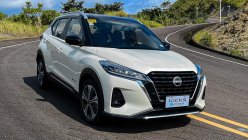Electric mobility is touted as the way forward in reducing both harmful emissions and dependence on fossil fuels. But in developing markets such as the Philippines, the transition is easier said than done.

Nissan sidesteps the shortfalls of electric vehicles with e-Power technology
Customers who otherwise want to join this revolution are held back by challenges like inadequate charging infrastructure, range anxiety, and prohibitive costs. The most ideal compromise these days are hybrid vehicles, and Nissan’s own take on this alternative powertrain is its e-Power technology.
What is e-Power?
Nissan e-Power refers to the automaker’s propulsion system that combines a gasoline engine with an electric motor, like those used by conventional hybrids. The technology was first introduced on the second-generation Note mini MPV for the Japanese market in 2016.
While Nissan refers to e-Power as a 100 percent electric motor-driven system, the powertrain is actually a series hybrid due to the presence of the combustion engine. Compared to parallel hybrids where the engine and electric motor care able to alternate in powering the drive wheels, a series hybrid has just one power unit mechanically linked to the wheels.
How does it work?
In a vehicle equipped with Nissan e-Power, only the electric motor has the job of spinning the wheels all the time, much like an electric car. The motor draws power from an onboard battery that is designed to be lightweight, but since the battery is small, it only has a limited capacity.

Under e-Power, the gasoline engine serves as a generator to power the electric motor
What happens when the battery runs low? This is where the combustion engine plays an important role, but not in the way you might think. In e-Power, the gasoline engine serves as a generator, recharging the battery and ensuring that it never runs out of juice to keep the electric motor running. An inverter converts the battery’s stored energy into usable energy for the motor.
Nissan says that e-Power uses Battery Electric Vehicle (BEV) technology refined in the LEAF EV. Unlike the LEAF’s external charging requirement, however, the e-Power battery is topped up by the combustion engine itself in a self-contained charging system. Simply put, the battery will never run of charge, as long as there is enough fuel to keep the engine running. Moreover, there is no gearbox involved since the combustion engine only powers the electrical system.
What are the benefits?
Nissan’s e-Power is technically not a full electric solution, but it brings plenty of benefits nonetheless. Chief of these is efficiency compared to a conventional combustion powertrain (or even many hybrid ones).
As the onboard engine is not mechanically connected to the wheels, it can run at its most efficient speed even during stop-and-go traffic, and this improved engine management reduces both fuel consumption and emissions. Typical mileage for e-Power vehicles exceeds 23 kilometers per liter in combined city and highway driving, according to Nissan.
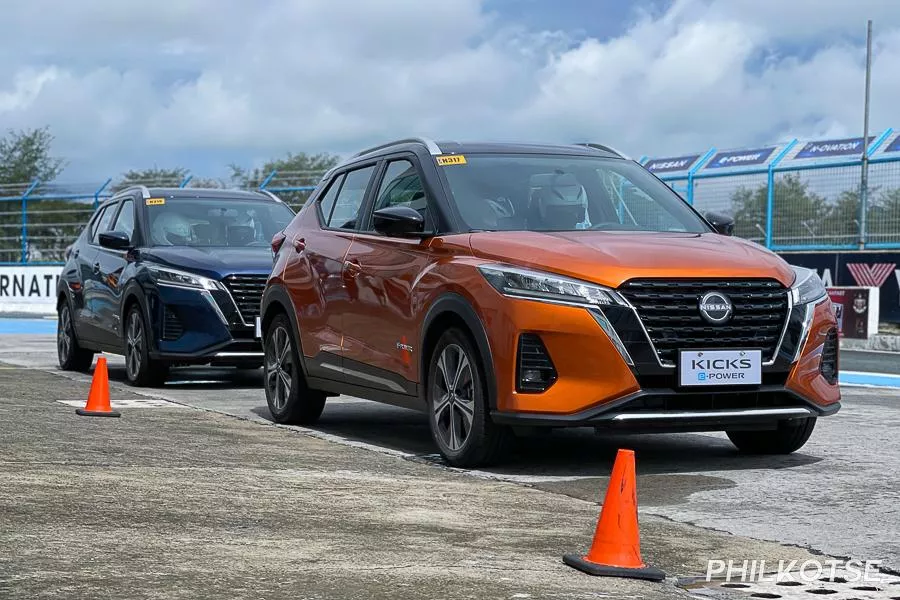
Nissan's e-Power technology will debut in the upcoming Kicks subcompact crossover
Efficiency is further improved with the use of both a small battery and engine, cutting down on the weight that e-Power moves around on a regular basis. A bigger battery is not necessary since the engine is always there to provide instant charging. Another way to top up the battery is through the brake energy recovery system, taking the heat generated by the brakes and converting it to electrical energy for storage and use.
Nissan e-Power uses a single-speed constant ratio gearbox instead of a standard transmission. There are no steps or even shift shock associated with gear changes, resulting in instant torque and smooth power delivery. And since the combustion engine still runs on gasoline, looking for the next fuel stop is easier than worrying about where the nearest charging station is located.
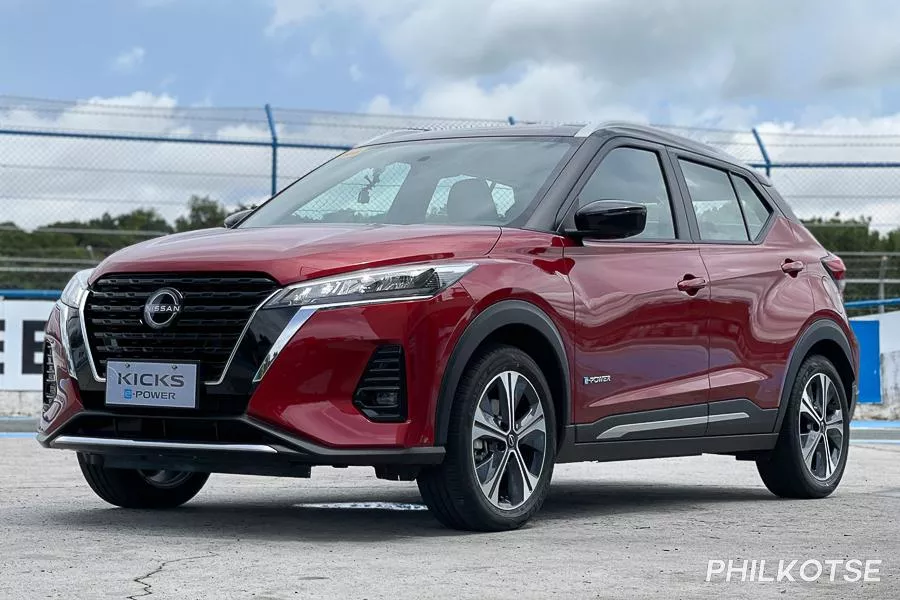
A new chapter in mobility is arriving
Finally, e-Power makes its debut in our market with the upcoming Kicks subcompact crossover, which uses a 1.2-liter 3-cylinder gasoline engine to charge the battery that runs an electric motor spinning the front wheels. The Nissan Kicks e-Power also features an innovative e-Pedal system that simplifies acceleration and braking with just one pedal.
Full electric mobility might still be out of reach of most customers right now. But, at least Nissan is taking steps to ensure that no one gets left behind in the quest for more sustainable transport with e-Power.
Learn more about alternative technologies that will change the face of mobility at Philkotse.com.
Know more about Nissan Kicks 2026

The Nissan Kicks Philippines is a hybrid-powered subcompact crossover. In the local market, it has four variants. They are the e-POWER EL AT, e-POWER VE AT, e-POWER VE Sport AT, and e-POWER VL AT. Their prices range from Php 1,179,000 to Php 1,499,000.
Under the hood, the Kick’s e-POWER engine can produce up to 134 horsepower and 280 Nm of torque. Power is sent to this Nissan model’s front wheels via gear reduction transmission.
Size-wise, the Nissan Kicks is 4,300mm long, 1,960mm wide, and 1,615mm in height. It also has a wheelbase length of 2,620mm, and a ground clearance of 180mm.
Locally, the Nissan Kicks competes against the likes of the Geely Coolray, Kia Stonic, MG ZS, Toyota Raize, Changan CS35 Plus, Honda HR-V, among others.
>>> New and used Nissan Kicks 2025 for sale in the Philippines
Nissan Kicks Launch
The Nissan Kicks was officially launched in the Philippine market in August 2022. At launch, it came with three variants. There were the EL e-POWER AT priced at Php 1,209,000, the VE e-POWER AT priced at Php 1,309,000, and the VL priced at Php 1,509,000.
Nissan Kicks Exterior
For exterior equipment, the Nissan Kicks is equipped with LED headlamps with auto-on/off function, LED daytime running lamps, LED taillights, auto-folding power-adjustable mirrors, etc. It also comes with roof rails. This model also gets a black-colored V-motion grille.
Nissan Kicks Interior

The 2025 Kicks can seat up to five occupants. Its rear cabin has 60:40 split-folding seats, while the front has manually adjustable Nissan Zero Gravity seats. Passengers are then kept comfortable with an automatic air-conditioning system,
For the driver, it also provides a tilt and telescopic steering wheel wrapped in leather, a 7-inch TFT display meter, an ample amount of bottle and cup holders, a 12-volt power socket, etc.
Technology & Safety Features
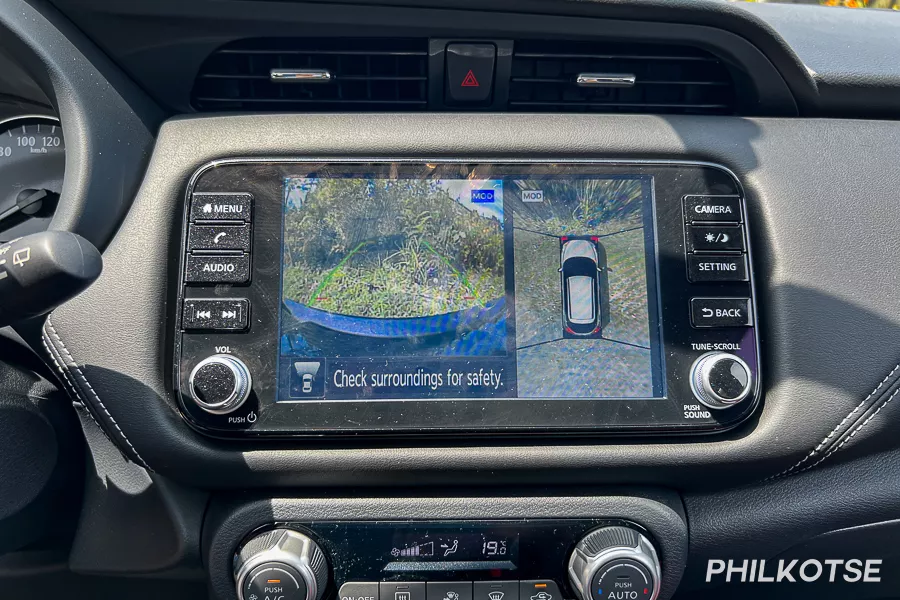
Depending on the trim, the Nissan Kicks gets a total of six airbags. It also has anti-lock braking with electronic brake-force distribution, vehicle dynamic control, an engine immobilizer, and a car alarm.
For entertainment, this subcompact model is equipped with an eight-inch touchscreen headunit with Apple CarPlay and Android Auto. The top-spec trim has six speakers, while the rest have four speakers.
Other features of this model include an idle start/stop system, a 360-degree view camera, parking sensors, and cruise control.
Nissan Kicks Engine
Powering the Nissan Kicks is an AC Synchronous motor supplied by a 2.13 kWh Lithium-ion battery. The said battery, in turn, is charged by a 1.2-liter inline-3 gasoline engine. Collectively, this is dubbed as the e-POWER powertrain.
At maximum, this system can produce up to 136 horsepower and 280 Nm of torque. Power is sent to its front wheels via an automatic single-speed gear reduction transmission.
Nissan Kicks Chassis
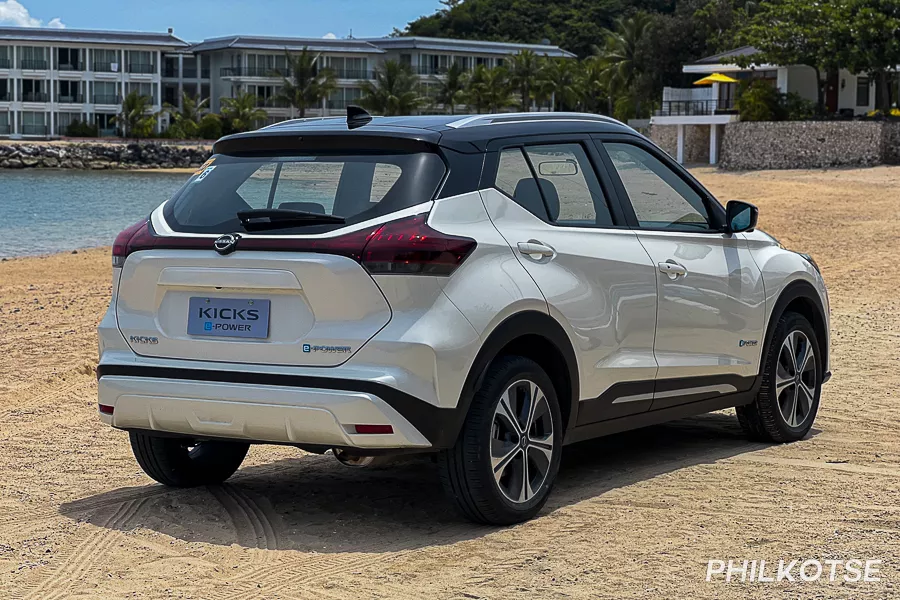
The Nissan Kicks uses the V-platform. It shares this with the Nissan Almera. For suspensions, its front end is a strut-type, while the rear is a torsion beam suspension. Braking is handled by disc brakes for all wheels, and its parking brake is an electric type with an auto-hold function.
Nissan Kicks 2025 Price List
| Variants | Price |
|---|---|
| Nissan Kicks e-POWER EL AT | ₱1,179,000 |
| Nissan Kicks e-POWER EL AT (Pearl White) | ₱1,199,000 |
| Nissan Kicks e-POWER VE AT | ₱1,279,000 |
| Nissan Kicks e-POWER VE AT (Pearl White) | ₱1,299,000 |
| Nissan Kicks e-POWER VE Sport AT | ₱1,369,000 |
| Nissan Kicks e-POWER VL AT | ₱1,479,000 |
| Nissan Kicks e-POWER VL AT (Pearl White Two-Tone) | ₱1,499,000 |
Nissan Kicks FAQs
1. How much space will the Nissan Kick 2025's luggage compartment have?
The capacity of the Nissan Kick 2025's luggage compartment will promisingly be 470 liters. That will be up to 835 liters of space after lowering the back seats.
2. How much will the Nissan Kick 2025 cost?
Depending on the variants, the Nissan Kick 2025 will be from Php 1,179,000.
3. How big is the Nissan Kicks 2025?
The measurement of the Nissan Kicks 2025 is 4,300mm in length, 1,960mm in width, and 1,615mm in height with a 2,620mm wheelbase.
4. How many variants does the Nissan Kicks 2025 have?
Four variants. They are the e-POWER EL AT, e-POWER VE AT, e-POWER VE Sport AT, and e-POWER VL AT.
5. What is one of the differences between the four variants?
In terms of safety features, the EL variant only has 2 airbags while the rest of the variants have 6 airbags.
₱ 1,239,000 - ₱ 1,539,000
ExploreRecent posts
- nissan kicks variants prices philippines Aug 03, 2022
- Nissan X-Trail debut Jul 20, 2022
- 2020 Nissan Kicks e-Power debuts 127-hp electric power in Thailand Dec 02, 2020






